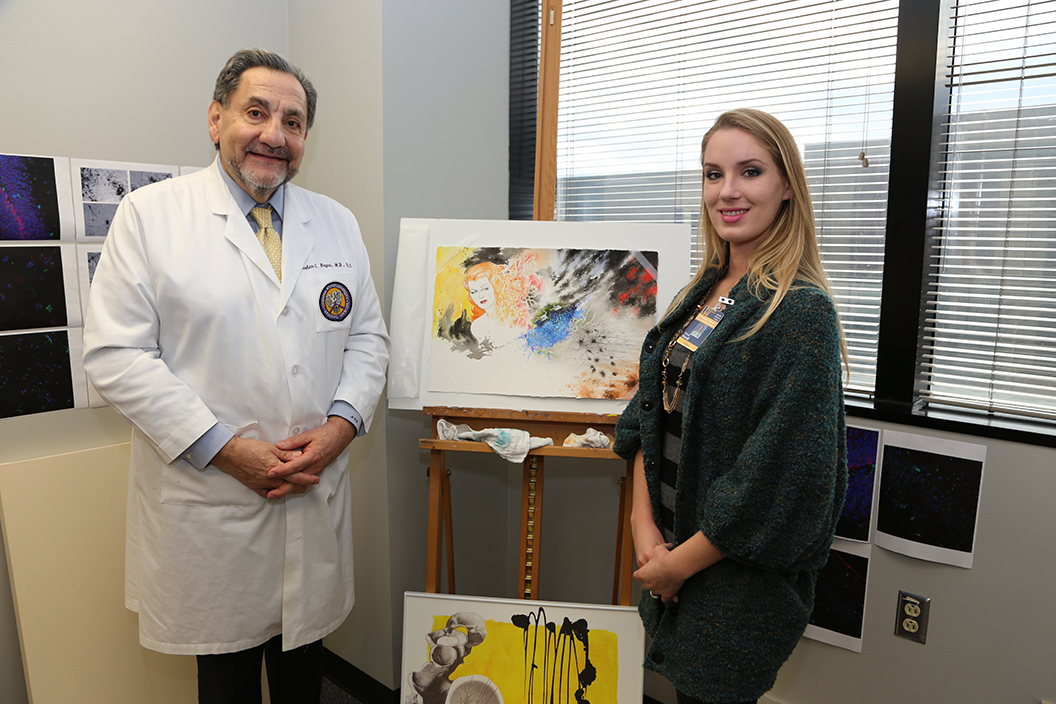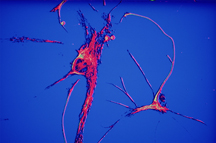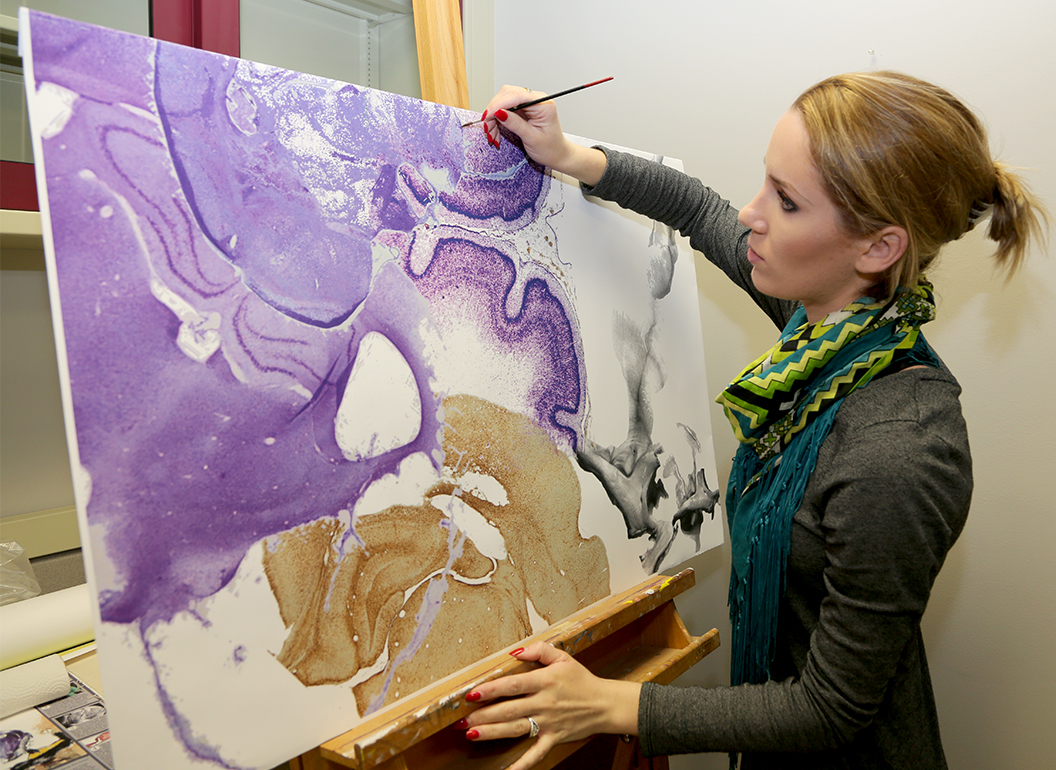
Leslie Capo
Office: 504-568-4806
Cell: 504-452-9166
lcapo@lsuhsc.edu
Related
One of their first collaborations and one of her more striking pieces is her interpretation of Alzheimer’s Disease.
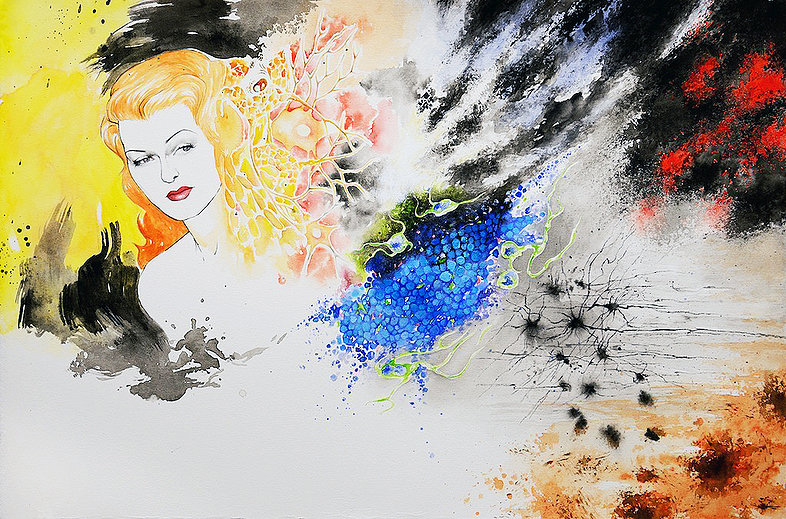
“We feel that our collaboration can help in the battle against Alzheimer’s because awareness in our society and among decision makers might mean more resources,” says Bazan. “The only way to conquer Alzheimer’s would be with a lot more resources than we have today to gain new knowledge about disease cellular and molecular mechanisms.”
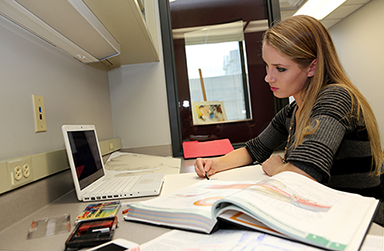
With a topic selected, work began.
“This is very sophisticated stuff. We are interested in specific cells in the brain in very early stages of Alzheimer’s because what we are trying to do is find ways to attenuate the initiation of the disease,” says Bazan.” I believe that is the therapeutic challenge in conquering Alzheimer’s disease.”“I had done several smaller studies just working with the images and the sketches that I had made and they weren’t living to me; they were static,” Nicoll adds. “To see these real examples of actual brain tissue actually experiencing Alzheimer’s or showing signs of Alzheimer’s on a microscopic level is critical to the understanding and development of these pieces. The greatest artists throughout history worked from life. It’s really, really challenging to create an authentic work of art without actually witnessing it in person. It’s one thing if you start it, and then finish it in your studio afterwards. But that experience of seeing it with your own eyes is invaluable. You can’t replicate that.”
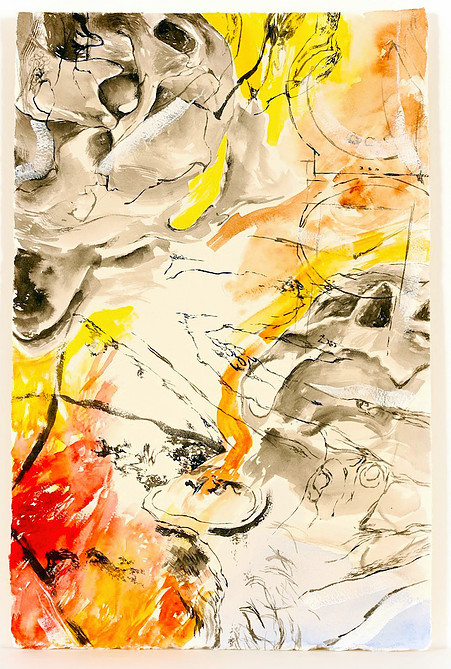
“I needed there to be a key protagonist for the work who was experiencing these things in his or her brain in order to bring the data and facts to life,” says Nicoll. “Rita Hayworth really stood out to me. What I was aiming for and what we had discussed that we wanted to achieve within this piece was the idea of cinematic catastrophe within the brain, a battlefield, a cerebral minefield of things taking place within the human brain. So, to connect a golden era screen goddess to the human brain was really important for me. I felt like it was a metaphor that really stood the test. Is this a real person? Yes. Is she iconic? Yes. Do people recognize her? Can they relate to her? Can they draw connections between what is going on here and her life story? Yes, yes and yes.”
The piece was so successful, even unfinished, and the idea of this type of collaboration so rare that Bazan and Nicoll submitted an abstract that was accepted for presentation by the American Neurological Association at the 2013 annual meeting. The idea of an artist helping medical professionals studying brain diseases proved too intriguing to pass up.
Nicoll grew up in South Africa during the last years of apartheid. Watching her parents help people in her dad’s pharmacy gave purpose to her life, too.
“The political situation that I was born into and then my parents and their own mission in life, it just created this sort of indestructible belief in optimism in faith, in positivity and forward progression. So for me, even when I’m handling a story that maybe wasn’t a success story within and of itself, I feel like the lesson and the meaning of the story can really reach people. And that provides the platform for healing, provides the platform to believe that you are not alone. For me, the critical element in every piece of work that I do is hope and optimism.”
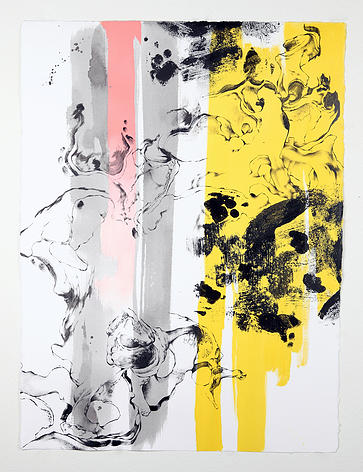
“Her art to me is a window of hope for humanity,” Bazan concludes. “Even as young as she is, the totality of her thinking and her art and her talent highlights the dignity of life and the dignity of humanness.”
